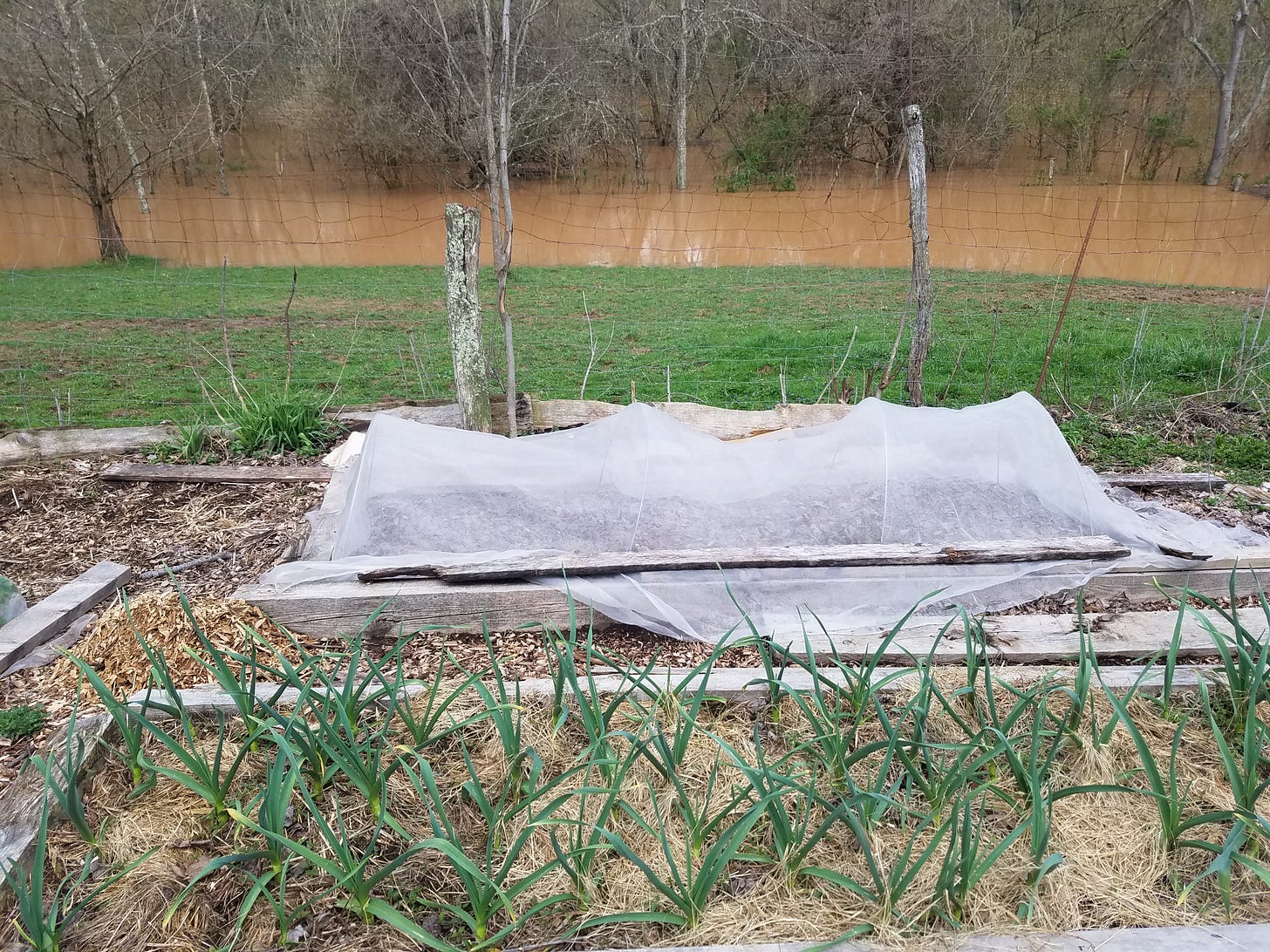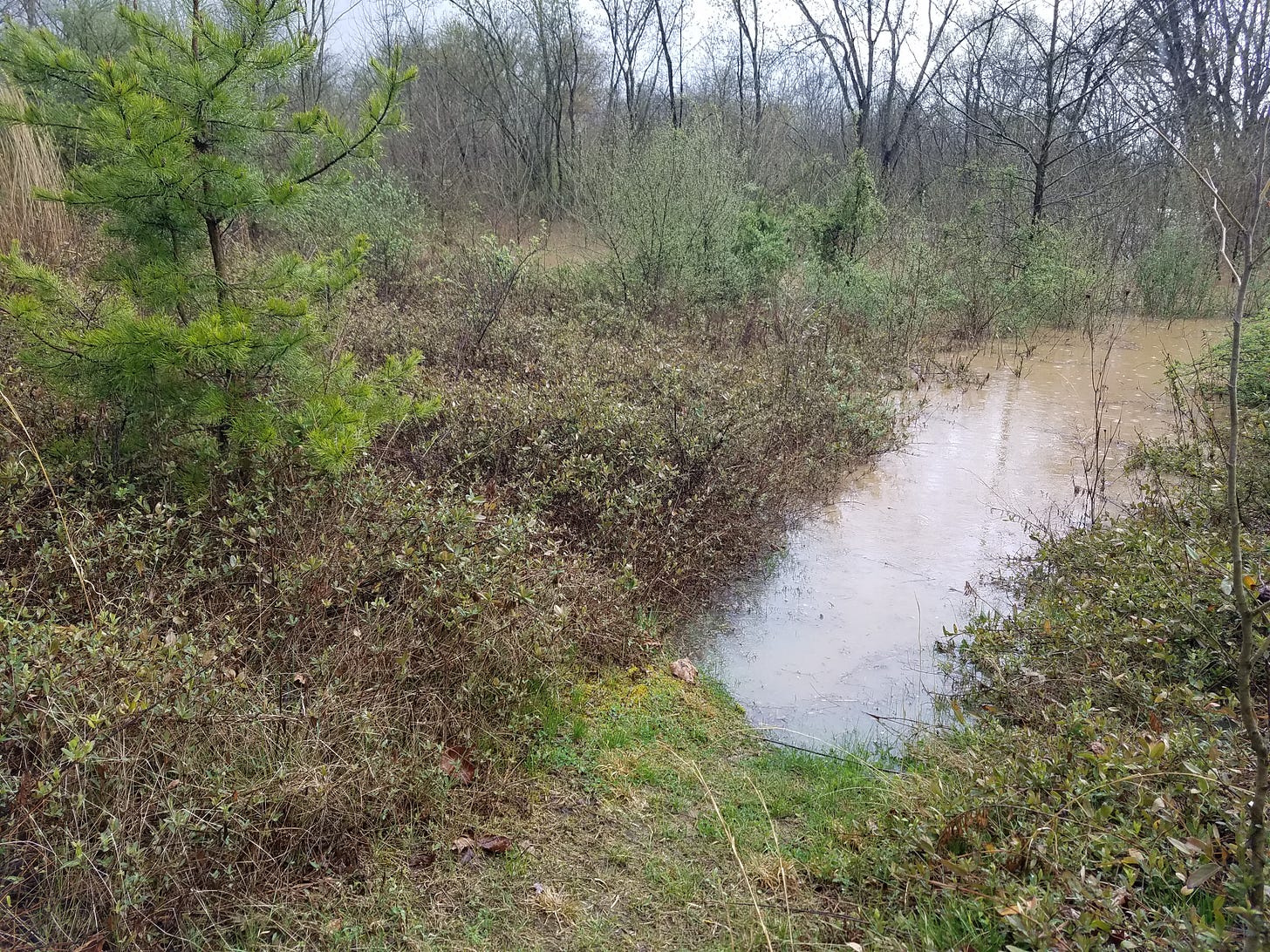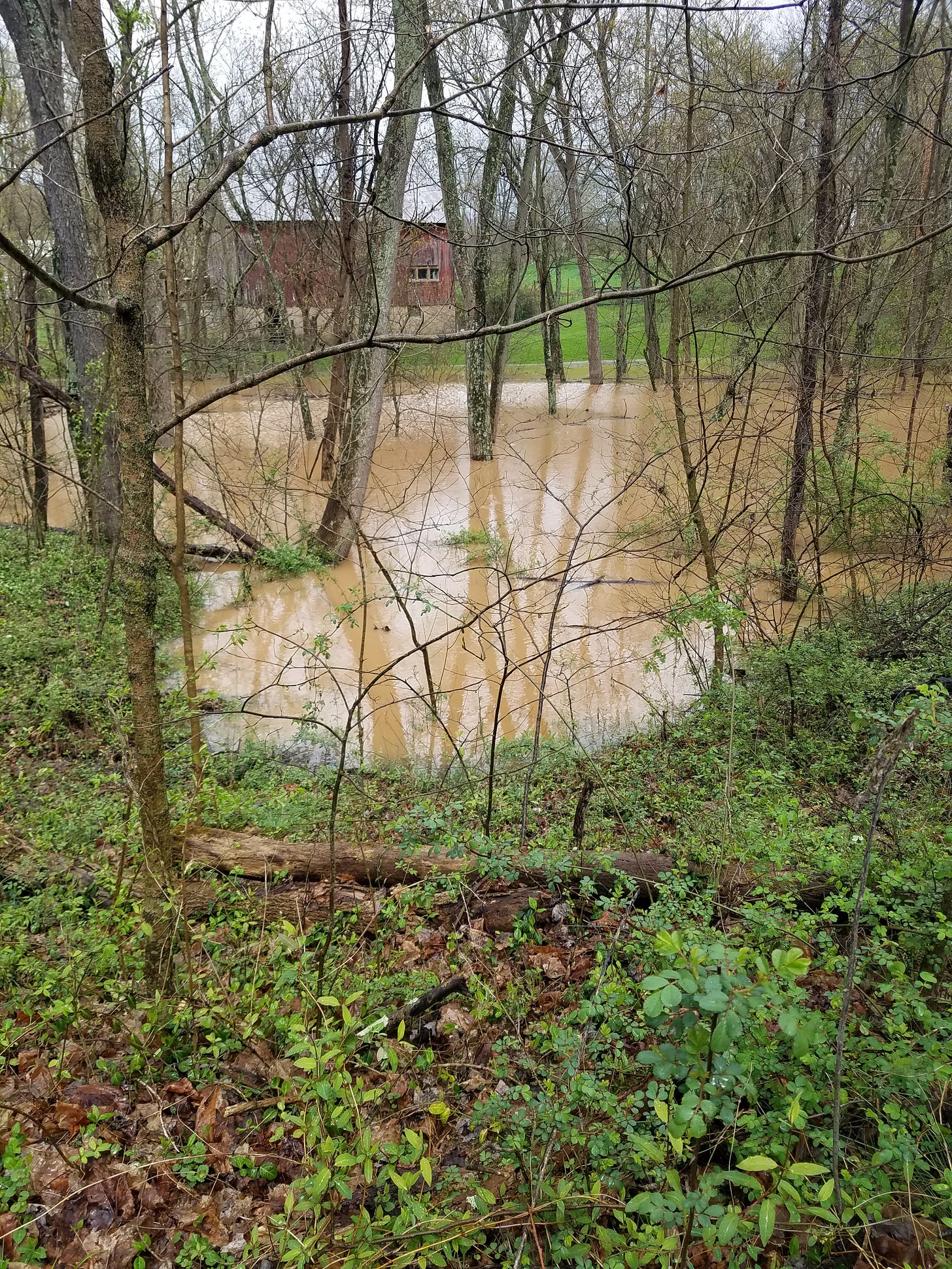Flood of '24
Photos and commentary
Beyond the garden
In the last few days the National Weather Service has issued warnings for our area for hail, severe thunderstorms, power outages, tornadoes, and flooding. Seems like they were just trying to cover all possibilities in hopes of getting one right. It worked. They were correct on the last one, and we're on the cusp of a major flood here in the Mid-Ohio Valley.
Pasture is completely inundated
All humans and animals are fine here, and we are unlikely to experience anything worse than minor inconveniences. The horses are stuck in the barn for a few days, and vehicles must be parked at the end of the driveway until waters recede, which will probably happen Saturday. The river is expected to crest just above major flood stage, which means the barn is not in danger. Four feet higher and we would see water in the horse stalls and chicken room.
It's important to point out that this is completely normal. I live in a flood zone, most of property is flood plain, and the nearby town nestles on the banks of the Ohio River and a major tributary. It's not climate change denialism to state that this flood is probably not caused by climate change, though it is possible it was exacerbated by it.
The road formerly known as driveway
In the days leading up to the flood, storms dropped large amounts of rain in a very short time period, but it is impossible to know to what extent climate disruption affected the severity of the storms. I'm mentioning this because it really bugs me when every natural disaster is blamed on climate change. Floods much like this one were recorded as far back as 1832. In fact, the five worst floods on record locally all occurred before 1940.
Here's an excerpt from the city's website:
In 1884 there was a dramatic weather change of 84 degrees in just 17 days; it went from fourteen degrees below zero with a foot of snow on the ground at the end of January to 70 degrees on February 12. The river waters crested at 52.9 feet, the third highest level in city history.
If this abrupt weather change and resultant flooding happened today it would be easy to blame it on climate change, but it demonstrates that wacky weather has been around for a while.
Path on the Savanna
The worst floods recorded here were in 1913 and 1937, with a very destructive one in 1907 also. It's interesting to note that these horrific floods coincided with the almost complete deforestation of the region for the purposes of agriculture, export of lumber to lucrative markets on the east coast, and charcoal production for iron smelting.
It's well established that forest cover and intact soil slow down water immensely, while rain falling on denuded slopes rushes unimpeded into waterways. As natural reforestation occurred as the population dropped when the iron ore played out, a period of slightly less destructive floods ensued. It seems logical to suggest that there is a correlation between tree cover and reduced floods.
The ravine is now swamp
The eagerly awaited crest is predicted to arrive in the wee hours. Until then there's not much to be done. It continues to rain off and on, but the temperature is dropping. Perhaps a blizzard is on the way.







Very interesting the historical links between deforestation and increased flooding then forest regeneration and reduced flooding. This mirrors a more recent study here in Coed Y Brenin (on a much smaller scale) and our own observations after clear felling higher up on our watershed- water levels in our streams rose much more rapidly and then sank just as quickly. As the regrowth got going and more water was held in the vegetation and absorbed into the soils, the reverse occurred.
Also, good point about not blaming everything on climate change- here in the UK the weather has always been capable of remarkably variability and extremes. Blaming climate change is an easy target and can mask other things that we are getting wrong.
Glad you and the animals are not experiencing too much inconvenience or damage from the flooding. May it recede for all soon!